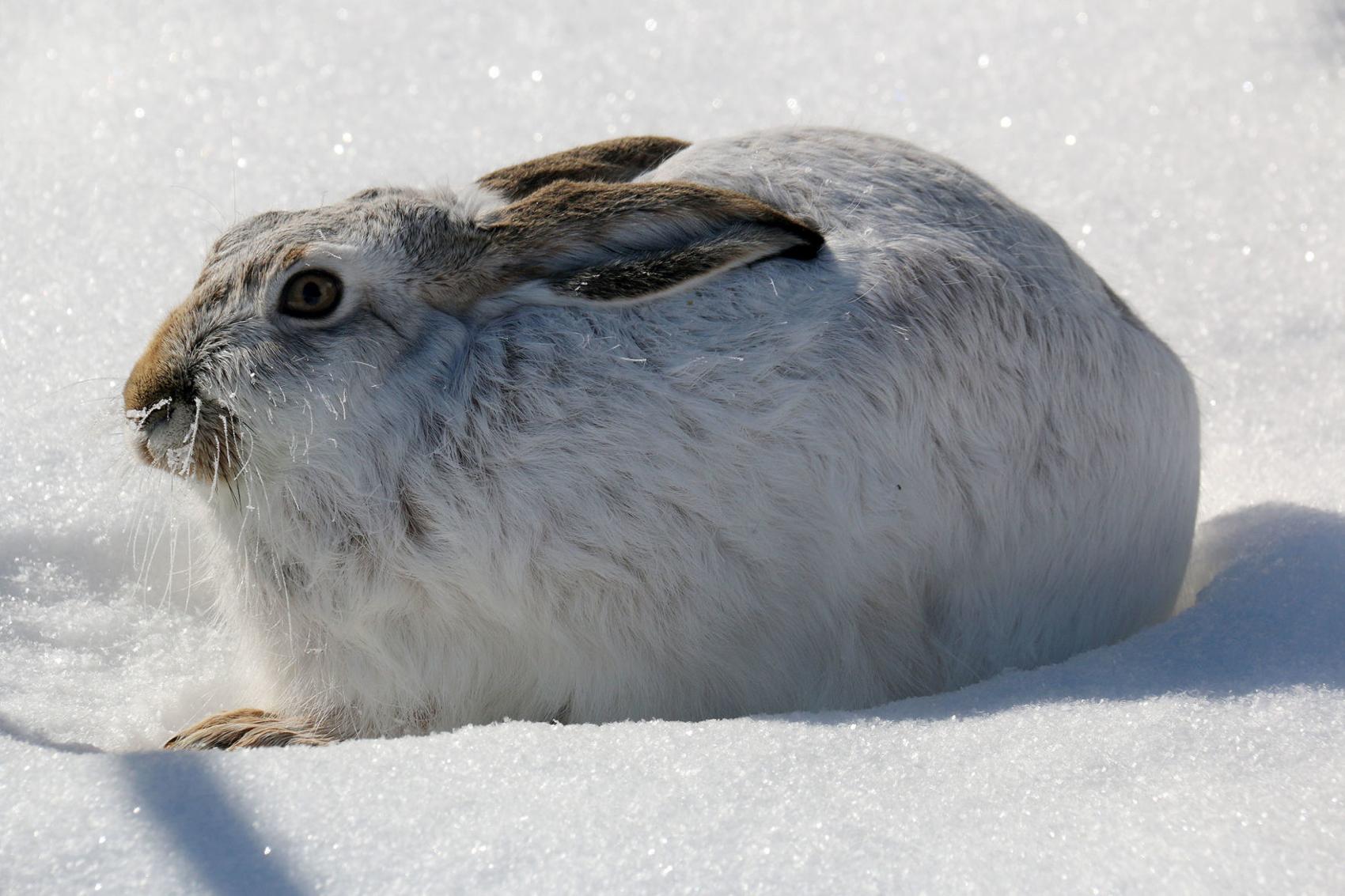Rare jackrabbit finds a refuge
A hefty and exceedingly rare hare has been making its home near the base of Miller Butte for much of the winter.
On several occasions, National Elk Refuge staff have spotted a winter-whitened, white-tailed jackrabbit, which is among the rarest native mammals in Jackson Hole.
“It’s been hunkered near the buildings and some of our equipment,” Elk Refuge spokeswoman Lori Iverson said.
Iverson, who has spotted and photographed the white jack, theorized that it might be hanging tight near the Elk Refuge’s autoshop at the base of Miller Butte’s north face to take shelter from predators, such as coyotes that frequent the nearby flats. The area is off-limits to the general public.
White-tailed jackrabbits rarely frequent the Elk Refuge. There have only been three verified occurrences ever, the last being 56 years ago, in 1963, though there was an unconfirmed sighting scratched into Elk Refuge records in the winter of 1990-91.
“All the confirmed sightings have been in the winter,” Iverson said, “except for 1959, and that was in the summer.”
Diet analyses of coyotes and observations from settlers and biologists suggest that the species was commonplace in Jackson Hole through the first half of the 20th century.
In 20 years of traipsing around Jackson Hole as a nongame biologist for the Wyoming Game and Fish Department before retiring last fall, Susan Patla never stumbled upon a white-tailed jackrabbit, the largest of the valley’s three rabbit and hare species. The others are snowshoe hares, a big-footed inhabitant of conifer forests, and mountain cottontail, which like white-tailed jackrabbits predominantly dwell in sagebrush environments.
“I’ve seen them in Pinedale and Teton Valley,” Patla said, “but I didn’t see any in the direct Jackson Hole area.”
“They’re probably one of those animals that have microhabitat needs that we don’t really understand well,” she said.
A solitary species, white-tailed jackrabbits weigh in at a hefty 6 to 10 pounds, turn white in winter and can typically be found in open prairie-like environments. Their most important food source is sagebrush, according to guidebooks.
Although research relating to white-tailed jackrabbits is decidedly slim on the whole, there have been some local examinations. Former Teton Valley resident and conservation biologist Joel Berger took an interest in the animal’s decline around the turn of the century and convened a workshop about the issue. Berger published recommendations that emerged from the gathering of biologists in a 2006 technical report, “Where have all the rabbits gone?”
The paper postulates that Jackson Hole’s jackrabbits might have been a satellite population connected to more robust populations in the Gros Ventre and Green River drainages that eventually were extirpated. Severe winters, disease, predation, human persecution, habitat change, competition for food with ungulates and chance were all possible — though impossible to test after the fact — causes of the disappearance. Infrequent observations in modern times hint that natural recolonization would be “unlikely to occur,” wrote Berger, who alluded to the possibility of reintroducing the lagomorphs to Grand Teton National Park.



